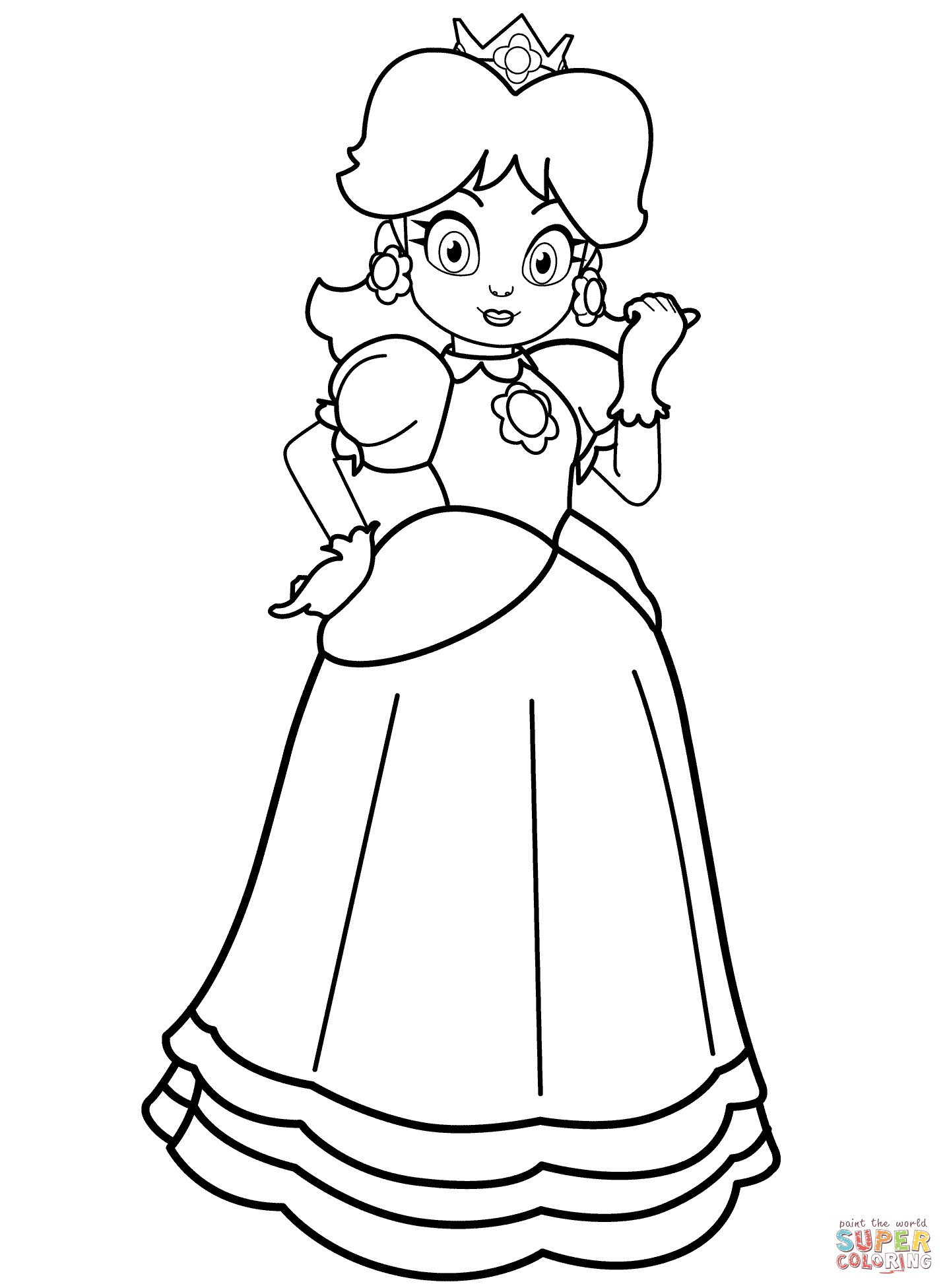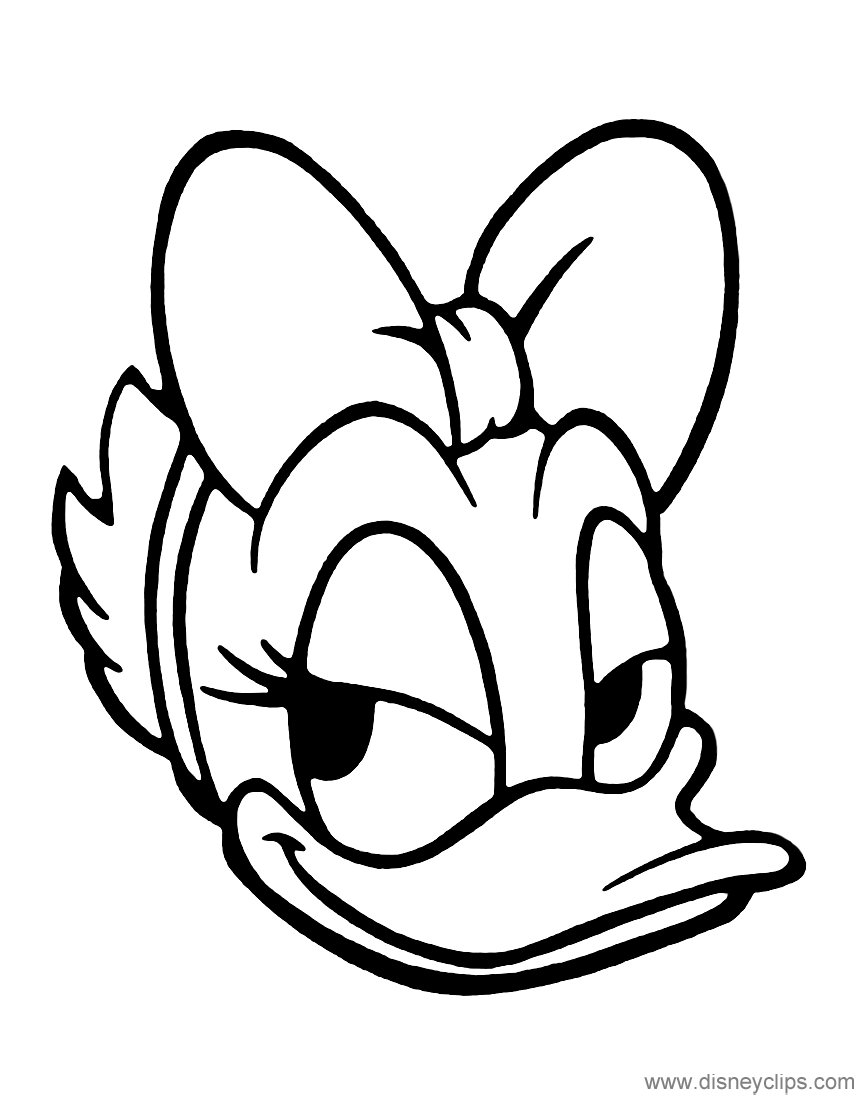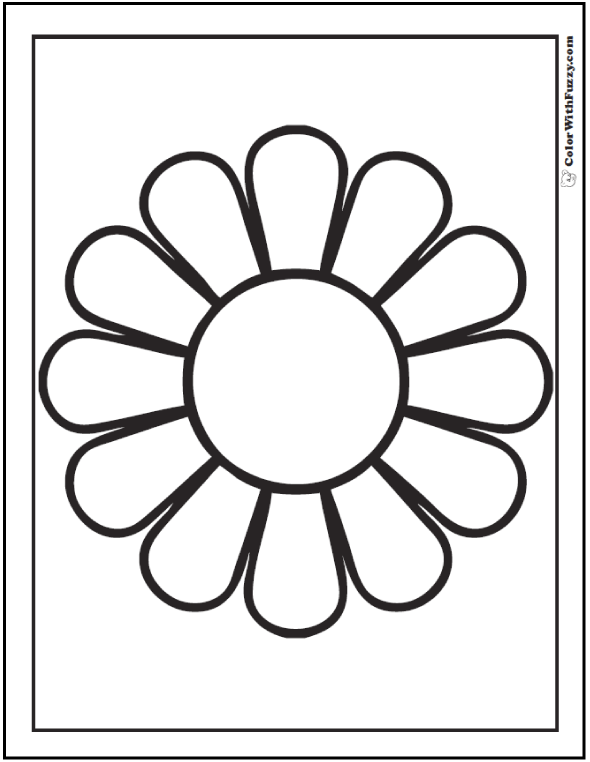Gerbera daisies have long-lasting 3- to 4-inch flowers that come in numerous shades of yellow, white, pink, red, orange, lavender, salmon, and bicolored. The center floral disk can range from a yellowish to light-bronze to black in color. Each flower is attached to a leafless stem that raises about 6 inches above the plant's foliage, which is a tall 12-inch wide clump of long, slightly "fuzzy" leaves. Gerberas produce flowers from late spring through autumn in the garden, and their blooms make long-lasting cut flowers. An early summer blooming perennial, Painted Daisies are hardy to zone 4. The plant grows 1-3 feet tall, has ferny leaves, and its flowers are about 2 inches across.
Growing well in sun to part shade, they like well-drained soil. If you cut back the blossoms after they fade it may re-bloom again again in late summer. The flowers come in red, pink, lilac, or white around a yellow center and there are even some double flowering cultivars. In the Pyrethrum genus, these plants are used to make organic insecticides so they have a natural repellent effect on many bugs.
Shasta daisy is a charming, reliable perennial that thrives in full sun with average moisture. If you have grown rudbeckia or coreopsis, you will find the care and growth habit similar for shasta daisies. Plant these perennials in the fall for the best chance at blooms the following season. Shasta daisies typically bloom white with yellow centers and make excellent cut flowers. The frilly, double-flowered varieties are especially worth seeking.
The rosette of foliage reaches around 12 inches tall, producing flowering stems inches tall. The daisy-like composite flower consists of disc florets and ray florets, growing singly at the end of branches or sometimes in inflorescences of terminal corymbose cymes. The disc florets are pseudo-bisexual and come in several colors such as blue, yellow and purple. The hardy types usually show a dark blue center in the disc until the yellow pollen is shed. The ray florets are female and are found diverse colors such as white, cream, pink, purple, mauve to yellow. Some cultivars have "spooned" petals such as "Pink Whirls".
Many species flower a second time late summer, stimulated by the cooler night temperatures. Hardy types show profuse flowering in the spring, but they do not get a second flush of flowers. Daisies are a type of flowering plant that belong to one of the largest plant families in the world. The most common type of daisy flowers that most people recognize are the ones with white petals and a yellow center. It is easy to identify most flowers in the daisy family due to their star-shape and elegant petals. Although some daisy species are invasive and regarded as weeds, many species have beautiful bright flowers to add color to any garden.
Osteospermum '4D Pink' is a bushy, evergreen, tender perennial with a profusion of soft pink daisy flowers adorned with a festive rosette of lavender-pink quilled petals in their center. Unlike most Osteospermum varieties that close at night, '4D Pink' sumptuous blossoms remain open day and night. In cool summer climates, these beautiful flowers will produce a long-lasting display from spring to frost. A mainstay of the cut flower and garden center industries, gerbera daisies are known for their saturated, candy-like colors.
The gerbera daisy hails from South Africa and is the national flower of Eritrea. The plants are compact, typically reaching 9-12 inches wide and inches tall. In zone 8 and south, gerberas can be grown as perennials if well mulched. Clemson cooperative extension reports that gerbera daisies may be successfully overwintered indoors. Unlike most Osteospermum varieties that close at night, '4D Violet Ice' sumptuous blossoms remain open day and night.
Unlike most Osteospermum varieties that close at night, '4D Sunburst' sumptuous blossoms remain open day and night. Shasta Daisies, orleucanthemum x superbum,are commonly grown perennials with the classic daisy appearance of thin white petals around a bright yellow center. Shasta daisies are a hybrid produced in 1890, and have become a favorite garden plant and ground cover.
Like other members of the daisy family, shasta daisies are popular because they're easy to grow and hard to kill. Osteospermum 'Voltage White' is a bushy, evergreen, tender perennial with a profusion of brilliant white daisy flowers adorned with yellow petal reverses and bright golden centers. When the blossoms partially close, both colors are visible, creating a pretty display.
Theses daisies have star-shaped flower that has a large yellow disk in the center. One of the reasons why these daisies are so popular is due to the large number of flowers on the plant. This bushy type of daisy plant has flowers with beautiful colors such as pink, red, purple, and white – perfect plant in your summer garden. Osteospermum - Cape Daisy, Daisybush or African daisy - is a genus of flowering plants belonging to the Calenduleae, one of the tribes of the very large daisy family Asteraceae. There are about 80 species, native to Africa and southern Africa. They are popular in summer bedding and numerous hybrids and cultivars have been produced with a wide range of tropical colors.
The gerbera daisy is a favorite flower amongst the masses due to its striking appearance. These flowers are generally used as a decorative cut flower for bouquets but are also in flower beds. These daisies come in many vibrant colors including red, orange, yellow, pink, white and cream. There are over 30 known wild species in South America, Africa and Asia.
These flowers are native to Africa, South America and Asia, however many other coutries are able to grow gerbera daisies if the right climate exists. The gerbera daisy got its name after Traugott Gerber who was a German naturalist in the 1700s. Gerbera daisies are also know as African daisies, Barberton daisies, Transvaal Daisies and Veldt daisies. Osteospermum 'Soprano White' is a bushy, evergreen, tender perennial with a profusion of brilliant white daisy flowers adorned with bright sapphire blue eyes. Osteospermum 'Orange Symphony' is a trailing, evergreen, tender perennial with a profusion of bright tangerine-orange daisy flowers adorned with a deep purple eye. Noted for their colorful blooms and long-lasting season, Osteospermum can be annuals, tender perennials or sub-shrubs.
They produce daisy flowers in an amazing array of bright colors, and in such great quantities, that they literally cover the evergreen foliage. Blooming from spring to frost in cool summer climates, they are easy to grow, tolerate drought and neglect and look stunning at the front of sunny borders, along paths or in containers . Its geographic range is from Touws River in the south, and north to Springfontein in the southern Free State. The species extends from Caltizdorp in the east to Springbok in the west. In early spring and summer this hardy perennial produces an abundance of predominantly white to orange flowers with yellow centres, but occasionally pink flowers occur. The plant grows into an erect, bushy little shrub up to 1m tall, but in garden cultivation it can reach a height of 1.5m.
It is frost hardy, and because its semi-fibrous root system which can go as deep as 1m, it is very drought resistant, and ideal for water-wise gardens. They form clusters of edible underground tubers that resemble small potatoes that are simply delicious when dug up each winter when the plants become deciduous. Replanting some of these tubers will ensure further yields the following winter. One of the most beautiful chrysanthemum daisies is the 'Robinson's Red' cultivar. This spectacular daisy has deep pink or magenta petals with contrasting bright yellow disk center. This plant from the daisy family also has fern-like foliage that adds color and volume to cut flower arrangements.
Another popular variety of daisy in the genus Tanacetum is the 'golden feverfew daisy' (Tanacetum parthenium 'Aureum'). These dainty daisy flowers have the classic white petals and yellow centers that daisies are famous for. The short oval petals in a single row fan out in ray around a large golden yellow disk. These low-growing, sun-loving perennials are a good choice for borders as they only grow to about 12" – 24" (30 – 60 cm) high. The beautiful variety of colors and types that Gerbera daisies come in make them a very popular flower for using in floral arrangements, colorful bouquets and centerpieces.
With their large, open blossoms and bright colors, it's no wonder that one of the meanings of the Gerbera daisy is cheerfulness. Other meanings include innocence and purity, in addition to these flowers being a classic symbol of beauty. Gerbera daisies come in several shades from deep red/ burgundy to bright red, orange, yellow, purple, hot pink, bubblegum pink and of course white. Large Gerberas are classic daisies with large blossoms that come in many colors like different shades of red, orange, pinks, cream and white. Osteospermum 'Lemon Symphony' is a trailing, evergreen, tender perennial with a profusion of soft lemon-yellow daisy flowers adorned with a deep purple eye.
Angelonia is also called summer snapdragon, and once you get a good look at it, you'll know why. It has flower spires that reach a foot or two high, but they're studded with fascinating snapdragon-like flowers with beautiful colorations in purple, white, or pink. It's the perfect plant for adding bright color to hot, sunny spaces, where it will bloom all summer long. While all varieties are beautiful, keep an eye out for the sweetly scented selections.
While most gardeners treat angelonia as an annual, it is perennial in Zones 9-10. Or, if you have a bright, sunny spot indoors, you can keep it flowering all winter. One of the most popular types of daisies is Shasta daisies .
This perennial bushy daisy produces flowers that have white petals and yellow center throughout the summer in your garden. They are also very easy to grow and just need to be in an area of your garden that gets full sun. This yellow and white daisy is the only annual type of daisy in the Bellis genus. The National Garden Bureau named 2013 the Year of the Gerbera, declaring the pleasing shape and luminous colors of the flower to be irresistible to gardeners.
Unlike some daisies, this South African native is a tender perennial, hardy only in warm climates. However, the plants can thrive in a container garden and make fabulous cut flowers, as many florists and brides can attest. Gerbera daisies prefer morning sun, although full sun is tolerated in cooler climates. Irrigate the plants at soil level to keep water off the foliage and prevent fungal diseases. Look for the Festival series in a rainbow of colors, or try one of the lush, semi-double types, such as the peach-hued Cartwheel Chardonnay.
Heat tolerant, Osteospermum 'Bright Lights Yellow' is a bushy, evergreen, tender perennial with a profusion of bright sunny-yellow daisy flowers adorned with a buttery-yellow center. No prizes for guessing where this exotic beauty is from. But in Sydney, African daisies have proven to be just as tough and easy to grow as they are in their homeland.
Come winter, they reveal a showy, generous mass of flowers that close in low light. Petals come in a range of shades, from white, creamy yellow and orange, to bold pink, purple and red. If you can't decide on one colour, the 'Passion Mix' variety features pink, mauve and white in one plant.
African daisy stems and leaves are coated in matted, downy hairs, giving them silvery-green colour. Low and fast-growing, the African daisy makes great ground cover and looks equally great in a pot. Shasta daisies tend to form clumps that are 2 to 3 feet tall and 1 to 2 feet wide. They bear all-white daisy petals, yellow disk florets, and contrasting glossy, dark green leaves. Shasta daisies are terrific as cut flowers, as their blooms can last a week or more in arrangements.
Townsendia daisies are a type of wild flowering plant that grows in high elevations. Depending on the species, these white and yellow flowering plants can be annuals or perennials. Some species have attractive flowers that grow on tall stems and produce ray florets. Other native species are small daily plants that have a spreading nature. Osteospermum 'Bright Lights Double Moonglow' is one of the showiest flowers of all the African daisy varieties. This beautiful type of daisy has flowers consisting of creamy-yellow petals surrounding a bushy yellow center.
This daisy cultivar grows in short clumps not more than 12" tall. Apart from its spectacular showy flowers, this perennial daisy blooms from late spring right up until the first frost. English daisies are one of the easiest daisy species to recognize. They are perennial plants that have beautiful flowers with pure white petals fanning out from a yellow center.
These small white flowers are between 0.8" and 1.1" (2 – 3 cm) across, and a single flower grows on top of a leafless stem. Marguerite Daisies, orargyranthemum frutescens,are commonly called Paris daisy. This variety of daisy is native to the Canary Island, with thicker petals than other daisies. They are popular as an ornamental plant in gardens and parks, and do best in full-sun. They bloom throughout the spring and summer, although they are most beautiful in the spring. In private gardens, they are frequently used at the borders of houses because they grow continuously.
These big, beautiful blooms attract a lot of butterflies, so butterfly watchers tend to love these showy flowers. Osteospermum 'Soprano Purple' is a bushy, evergreen, tender perennial with a profusion of rich lavender-purple daisy flowers adorned with sapphire blue eyes. Osteospermum 'Soprano Light Purple' is a bushy, evergreen, tender perennial with a profusion of soft lavender-purple daisy flowers adorned with sapphire blue eyes. It tolerates frost and drought, as well as dry and windy environments, making it perfect for water-wise gardens. Well adapted to our Australian climate, Federation Daisies enjoy a nutrient rich, full sun position that is well-drained yet not overly dry. The newer hybrid cultivars have been developed to remain compact in growth while the older forms can reach heights well over one metre.
The English daisy is a biennial in the Chicago area and is often seen as a companion plant to spring-flowering bulbs. It prefers a cooler, moist spring and will often fade during the heat of Chicago summers. If deadheaded regularly, English daisies will often bloom sporadically through the fall.
Short little plants, perfect for edging, they sport a common yellow center with varying shades of rose, red, salmon, or white ray flowers. As African Daisies are a perennial only to zone 9, we grow them as an annual. The dark centers of each blossom have an almost metallic sheen and the petals are also shiny.
Growing 1-3 feet tall, they come in a wide range of colors including pink, lavender, yellow, red, orange, and white. Even though they hail from Africa they do not like hot humid summers. It looks similar to the familiar roadside daisy but has larger and more robust blooms. Shasta daisies tend to bloom in clumps from 2 to 3 feet tall and 1 to 2 feet wide.





















No comments:
Post a Comment
Note: Only a member of this blog may post a comment.